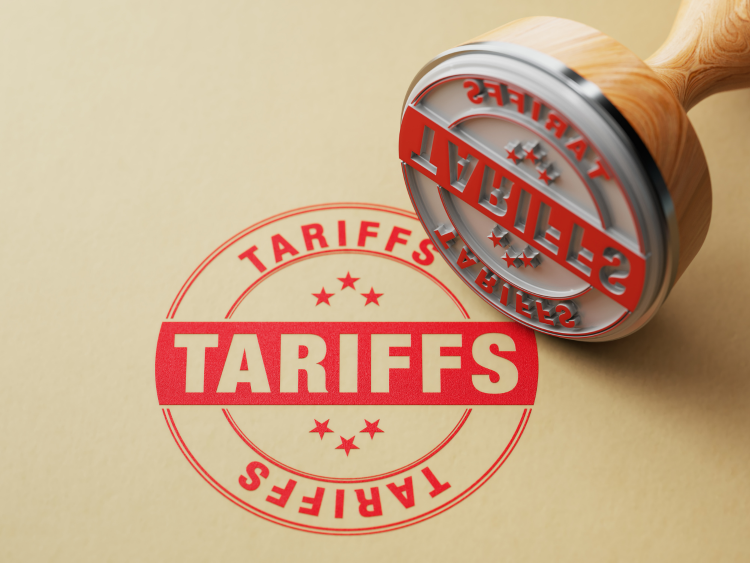
In our interconnected world of trade and communication, the cultural landscape plays a pivotal role in shaping consumer preferences and behaviors. This article undertakes a thorough exploration of how culture influences consumer goods globally, spotlighting both shared elements and unique distinctions across diverse regions. From the Asia Pacific to Europe, North America, Latin America, and the Middle East and Africa, sophisticated ways of interaction of cultural nuances that influence consumer choice will be explored. This may include an analysis beyond regional borders with an eye on globalization as related to the homogenization of consumer goods but also new dynamics introduced by technology, sustainability concerns, and ethical consumption. It tries to unravel the intricate cultural relationship with consumerism, reflecting the new trends defining the contemporary global marketplace.
1. Introduction
Acknowledging the complex interplay between culture and consumer goods can be of inestimable value to businesses wanting to achieve international success. The chapter begins with a list of the key concepts covered in the article, noting this is a critical foundation for understanding consumer behavior is the concept of cultural sensitivity. By highlighting the importance of this connectedness, businesses can strategize their way through the tapestry of cultural differences, customize their ways of working and bring their offerings closer to the ever so finicky needs and wants of consumers around the world. This first chapter introduces something of the tone of the discussion over an almost overarching subject area the influence of culture on the steadily changing world of consumer goods.
2. Regional Variances in Consumer Preferences
2.1 Asia-Pacific
The Asia Pacific region is marked by diversity and vastness, which extends to the display of unique cultural nuances in a way that is quite expedient in significantly influencing consumer choice. It narrates the richness of the tapestry of cultural influences that sweep across the region from the collectively driven traditions of Japan to the multi-faceted and preference-driven consumer landscape of India. We will explore how these cultural elements come together to shape consumer behavior in Asia Pacific. These subtleties assume huge importance to understand if businesses are to move around, operate within and ultimately thrive in such a complex and diversified market, because it is a place where culture exercises a powerful sway over consumer tastes and preferences.
2.2 Europe
Steeped in rich history and diverse traditions, Europe reveals discernible consumer patterns that were shaped by its cultural tapestry. The purpose of this subsection is to assess how deep the impact of cultural factors, language history and social norms is on consumption habits in these countries. It will be shown from an examination of these influences how shared elements and unique distinctions in consumer behavior are at work. The understanding of these complex cultural factors is necessary for any firm to penetrate the European market, either by way of linguistic ties or historical legacies. This discussion underlines the need to have nuanced strategies that would take into account varieties defining varied cultural landscapes characterizing consumer preference in this historically and culturally rich continent.
2.3 North America
This is part of the heterogeneity that is intrinsic to the cultural landscapes of North America, represented by the United States of America and Canada. The paper focuses on how these cultural subgroups influence how regional and ethnic differences shape consumer choice differently in this huge market. Unpicking these varied influences, businesses will learn more about nuanced preferences stemming from a varied cultural tapestry and better understand the need for strategies that resonate with the intricacies of consumer behavior across regions and different ethnic groups.
2.4 Latin America
Latin America presents a very dynamic consumer environment with vibrant cultures and traditions. This section discusses the peculiar cultural influence that defines and sculpts consumer behavior in the region, covering such topics as the effect of festivals and the central role of the family structure. Unpicking these cultural factors, companies can better understand the unique drivers of consumer decisions within Latin America. The importance of festivities and family bonding cannot be divorced from any strategy that would have to function in tandem with the cultural nuances and preferences specific to that region.
2.5 Middle East and Africa
IIt is in the Middle East and Africa that key cultural variables, the role of religion, tradition and socio-economic conditions play such an unusually preponderant role in guiding consumer preference. The section explores in detail how culture and business interact with each other in these two diverse regions. It is through the understanding of how religious beliefs, deeply anchored traditions, and economic contexts interact that firms can begin to appreciate the dynamics underlying consumer choice. It is hence incumbent on the company to identify and respond to such multifaceted influences as a matter of necessity if it is to effectively engage with and cater to the varied consumer preferences characterizing the Middle East and Africa.
3. Globalization and Homogenization
No question globalization of consumer goods is the inimitable trend with global connectivity. On the other hand one of the challenges which culturally also emerged is culture homogenization. This section examines the extent of equilibrium that global brands should reach in between standardized products and cultural variedness sensitivity. It goes deep into the intricacy of negotiating this fine balance to reveal that firms need to be careful in calibrating their approaches. Good global brands manage to take sensitive adaptations that maintain brand identity in very different cultural contexts, without running the risk that their products come off as inauthentic to consumers.
4. Technology and Changing Consumer Dynamics
4.1 Social Media and Influencer Culture
The rise of social media represents an independent driving force of culture in influencing the consumption behavior of consumers. The next section decomposes their radical change with influencers and digital communities, showing how online platforms have an amazing influence on both global and local consumer trends. From preference setting to driving purchasing decisions, the dynamics of social media redefine the consumer landscape. Any business operating in such a moving landscape has to understand the power of the digital influencer and online community and how that has come to shape consumer behavior globally.
4.2 E-Commerce and Digitalization
One of these revolutionizing strengths, which is changing the scenario, was the digital trade of consumer goods. Following are the behavioral-cultural dimensions of the digital one of the most important dimensions of the online shopping habits and significant influence from e-commerce platforms that define the consumer decisions. In an era when marketplaces have become virtual, the determining factor for the success of digital strategies is cultural nuance. This requires business organizations to understand the interfaces of technology and culture so that they are rightly positioned to harness the transformational power of digitalization in offering their products and services in a way that befits contemporary consumer preferences.
5. Sustainability and Ethical Consumption
Cultural values have an increasing influence on consumers' ethical considerations and sustainability preferences. This section explores how culture relates to the rise of sustainable consumerism. Closer investigation of cultural attitudes toward the environment, social responsibility and ethical sourcing leads into the drivers of the rising demand for eco sensitive products. As consumers begin to align their values with their purchasing decisions, any business has to understand and assimilate these cultural nuances so that it can come out with strategies that are sustainable. From environmental awareness to ethical safeguards, this shift in cultural values prescribes the trajectories that sustainability in consumer goods will take globally.
6. Emerging Trends and Future Outlook
This section outlines the cultural drivers of emerging consumer goods, giving insight into what's next and what's new. This segment delves into demographic shifts, technological reformation, and other transformations in the cultural backdrop that gives insight into what will characterize the global consumer landscape at some point in the near future. Societies change, which causes changes in consumer preferences, and an understanding of this dynamic is what businesses need to stay ahead of. Only through predicting trends and therefore shaping them in line with cultural changes, demographics, and technological development will companies avail themselves of strategic and tactical positioning in the ever-dynamic international consumer goods market.
7. Conclusion
IThis chapter ends with an extremely important point regarding the pivotal findings and insights that have been drawn from the rigorous global comparative analysis: Being culturally attuned is a basic imperative for anyone doing business to really succeed in the constantly evolving consumer goods landscape. The synthesis of diverse cultural influences unearthed in the article points to the fact that understanding and respect for such dynamics are what business firms that seek to understand and place themselves within this complex and dynamic global marketplace need to embrace. Indeed, businesses that embrace cultural sensitivity therefore put themselves in a very strategic place amidst changing consumer preferences. Whether one wants to focus on regional flavors or global movements, cultural awareness is a prerequisite not a mere tool that would be helpful in giving the brand an edge if and when it wants to establish a connection with target consumers and leave a mark on the consumer goods market of today.
Trending Posts

Global Silver Nanoparticles Market
The global silver nanoparticles market was valued at $2.08 billion in 2020, and is projected to reach $4.1 billion by 2027, growing at a CAGR of ~17%

The Basic Pension Comes - Federal Cabinet Decides On the Pension Supplement
Financial security in old age is an issue that is causing stomach pains for more and more people in Germany. Low-wage earners fear the elderly. The ba

The Future of Artificial Intelligence
In recent years, the field of artificial intelligence (AI) has witnessed unprecedented growth and transformative advancements. As AI technologies

"LNG Bunkering" Here is something you must know!
In the current scenario of growing pollution, companies are trying to adapt more and more sustainable approach that not only gives eco-friendly result

Sailing into the future with Autonomous Ships
Autonomous Vehicles (AVs) are the uproar of this era. After airways, thanks to the companies like Tesla, that people are now getting used to see drive

Rising Demand For Uninterrupted Power Supply Is Expected To Drive The Power Rental Market
Todays world is totally reliant on electric power. There are many things which are not manageable without electricity. Power rental is a concept where

Rapidly growing IT industry coupled with the trend of bringing your own device (BYOD) is expected to provide new opportunities for growth of Cloud Collaboration
Cloud collaboration is the process of sharing and co-authoring the computer-based work through cloud technology

Fact check on UV Disinfection for COVID-19
Many regulatory authorities and bodies believe that UV disinfection technologies can play a role in a multiple barrier approach to reducing the transm

Vaccination: Vaccination Against Measles is Now Mandatory in Germany
The subject of compulsory vaccination has always heated peoples minds and caused emotionally charged discussions. The latest law in this area - the ob

The Global Ventilator Market Grows at a CAGR of 7.75 %
The Global Ventilator Market, which was at $688 million in the year 2016, is about to double by the year 2025, and reach a value of $1,347 million. Th
Recent Posts

Tariffs & Trade: Key Trends, Policies, and Market Impact
A tariff is a tax imposed by a government on imported or exported goods. It is primarily used to regulate international trade by either encouraging domestic production or generating revenue for the government.

The Global Buy Now Pay Later (BNPL) Market: Growth and Opportunities
The global Buy Now Pay Later (BNPL) market has emerged as a revolutionary financial solution, transforming how consumers approach shopping and payments. Offering flexibility and convenience, BNPL allows consumers to make purchases and pay.

Global Motorhome Market: Growth and Forecast
The motorhome market has gained significant momentum over the past decade, driven by rising interest in outdoor tourism, evolving consumer lifestyles, and advancements in vehicle design and technology. As a preferred option for travelers seeking.

The Global Poppy Seed Market: Growth and Trends
Poppy seeds, derived from the opium poppy plant (Papaver somniferum), have been a vital component in global culinary, pharmaceutical, and personal care industries for centuries. The global poppy seed market is gaining traction due to its versatility.

Global Plant Breeding and CRISPR Plants Market
The global food industry is facing immense pressure due to rising population levels, diminishing arable land, and the impact of climate change. Innovations in plant breeding, particularly the use of CRISPR technology, are reshaping the agricultural .

Global Pheromones Market – Trends, Opportunities, and Forecast
The global pheromones market has witnessed significant growth, primarily driven by the rising demand for eco-friendly pest control solutions in agriculture. Pheromones, natural chemicals emitted by insects and other organisms to communicate.

The Role of Technology in Oil and Gas Risk Management
In an industry as dynamic and complex as oil and gas, risk management is crucial for ensuring operational efficiency, regulatory compliance, and safety. Risk management software has become an indispensable tool for companies in this sector.

Global Smart Grid Sensors Market
The global energy landscape is undergoing a significant transformation, with smart grid technologies at the forefront. Smart grid sensors, a critical component of modern energy grids, enable efficient monitoring, energy distribution.

Global Photovoltaic Glass Market Research Report
The global photovoltaic (PV) glass market is experiencing unprecedented growth, driven by the accelerating shift towards renewable energy and the integration of sustainable materials in construction. This report delves into the market’s key growth.

Exploring the Growth of the Global Micro Solar Inverter Market
The Global Micro Solar Inverter Market is forecasted to expand significantly, growing from an estimated value of USD 4.8 billion in 2024 to USD 14.6 billion by 2030, with a CAGR of 24.2%. This growth reflects increased adoption of solar energy system
.png)